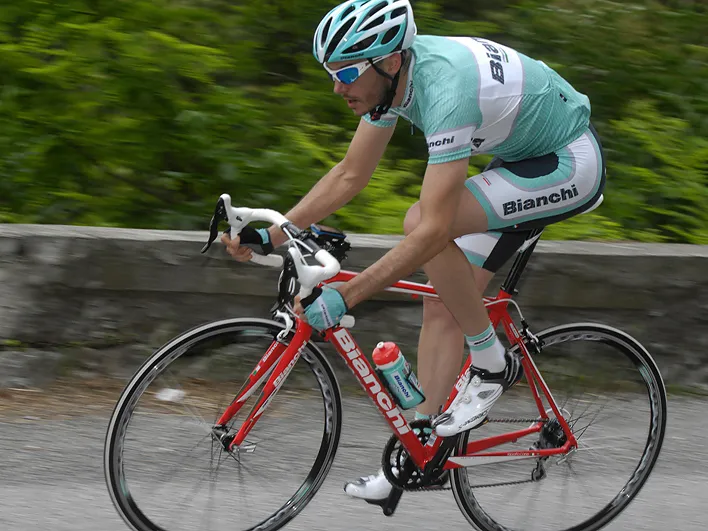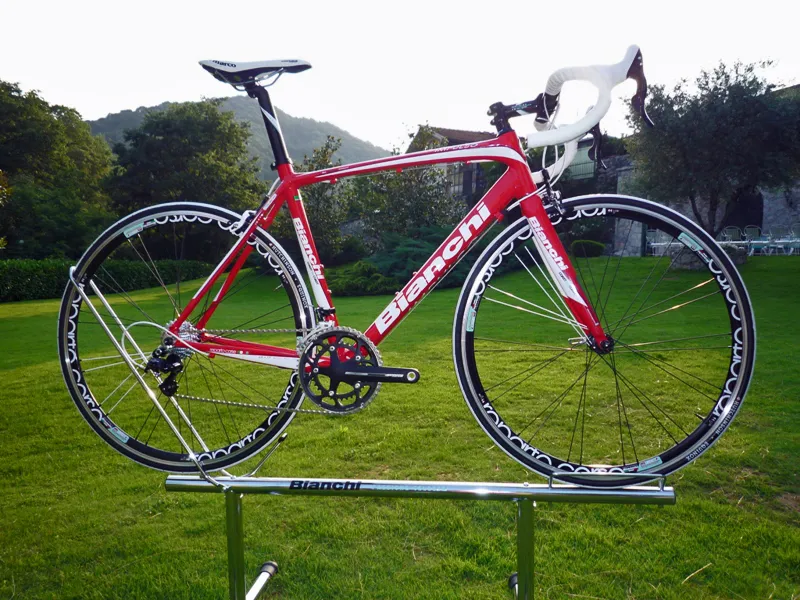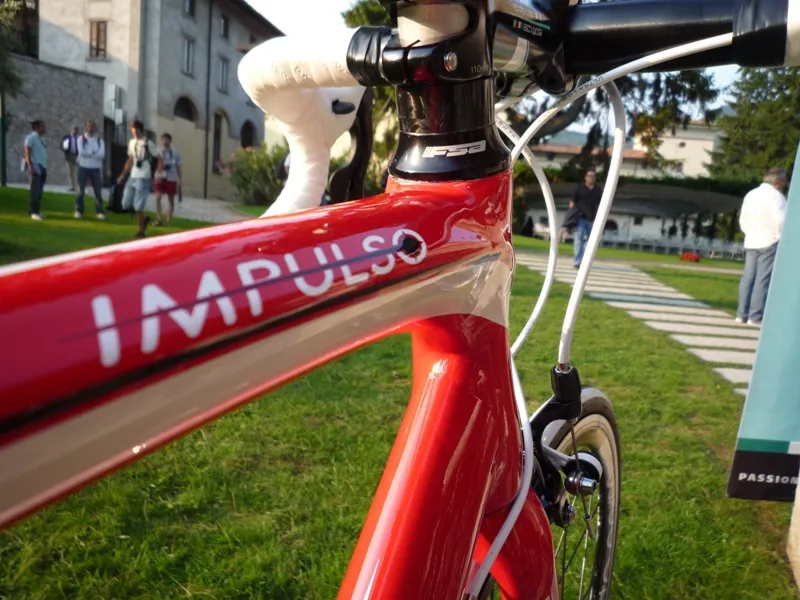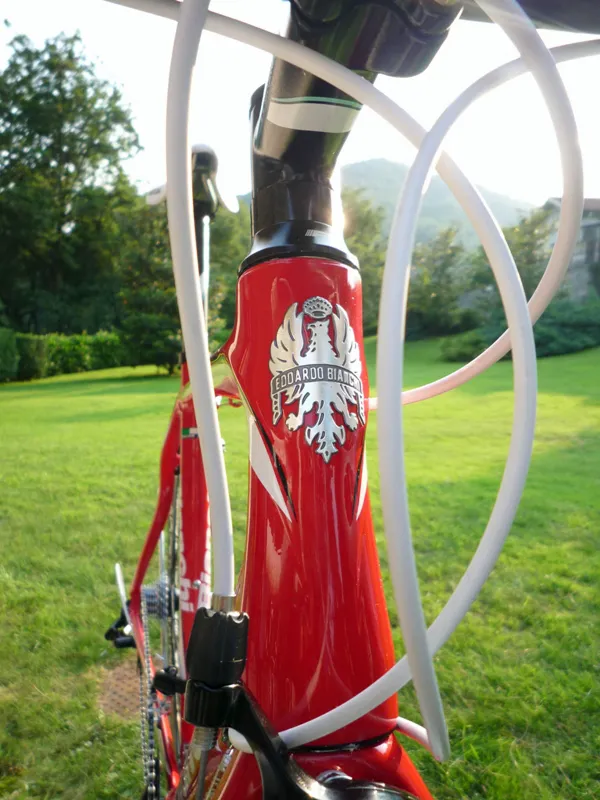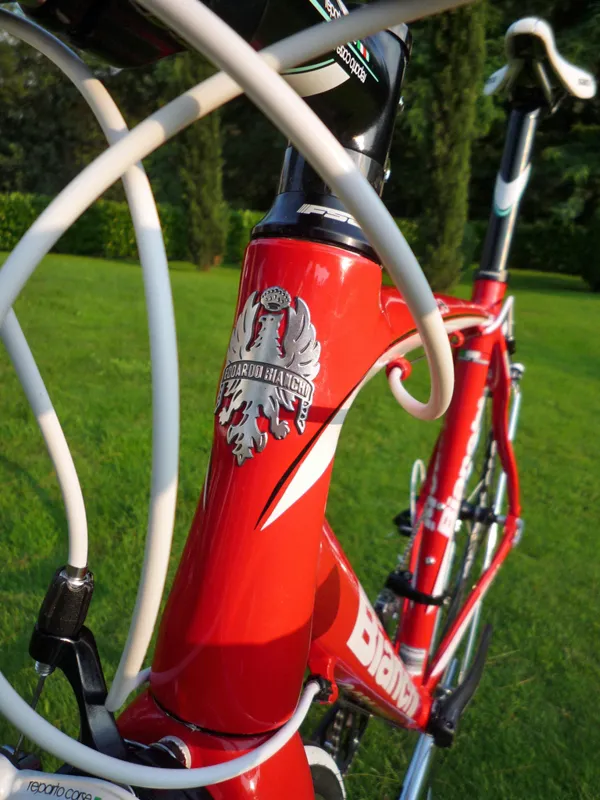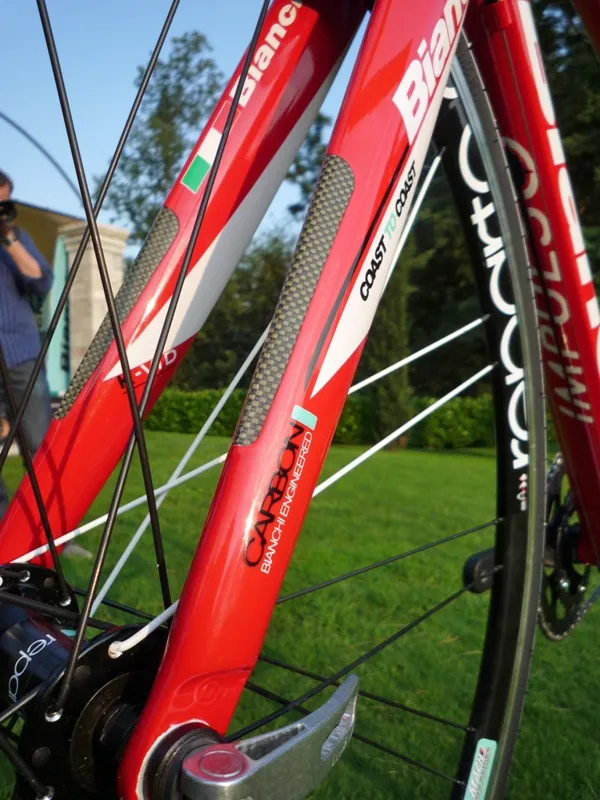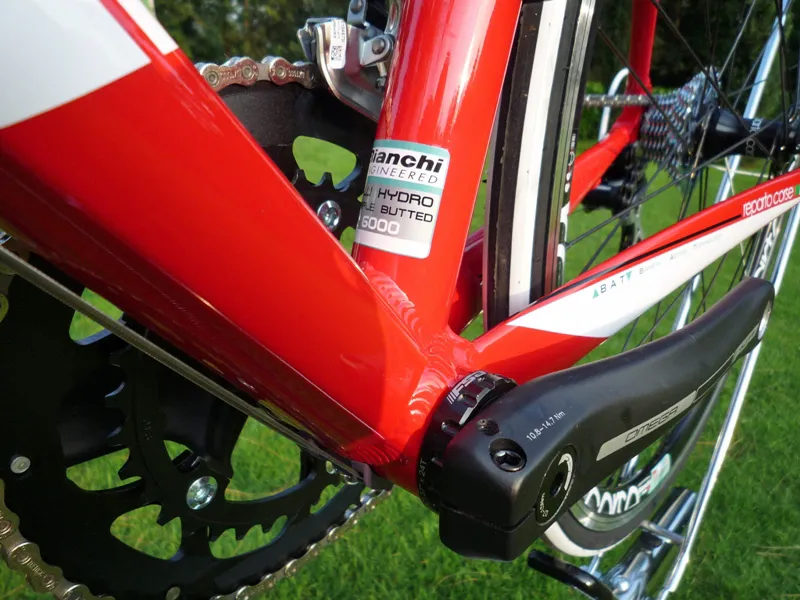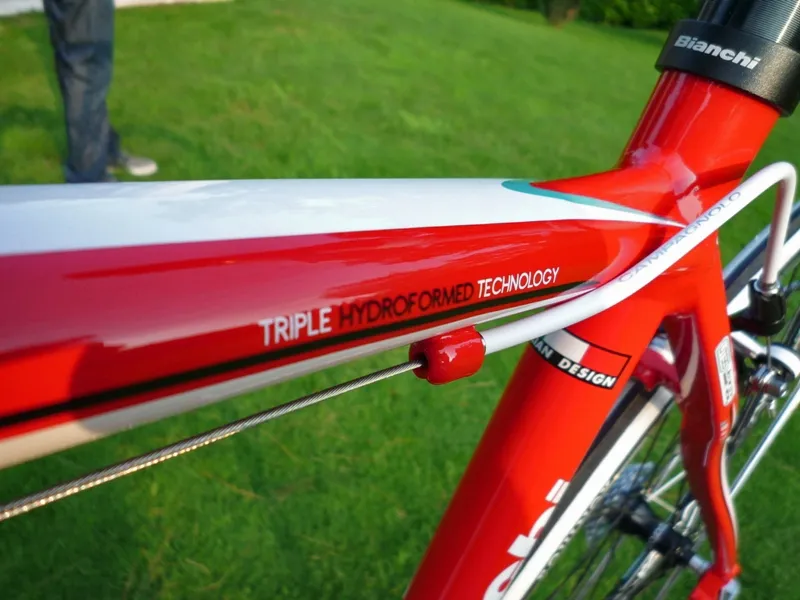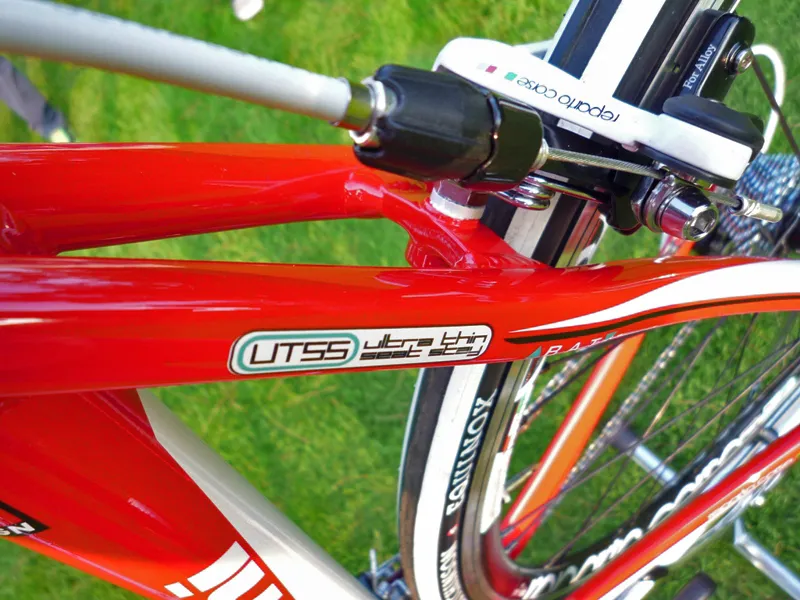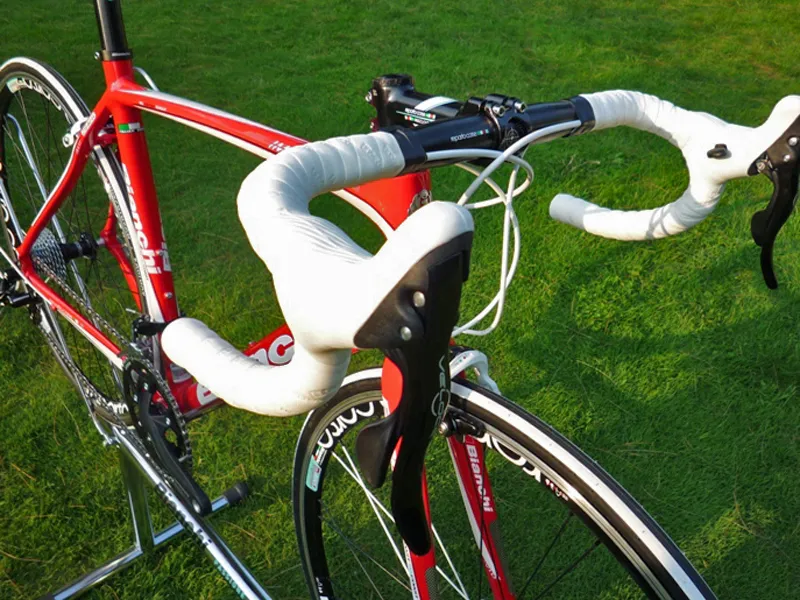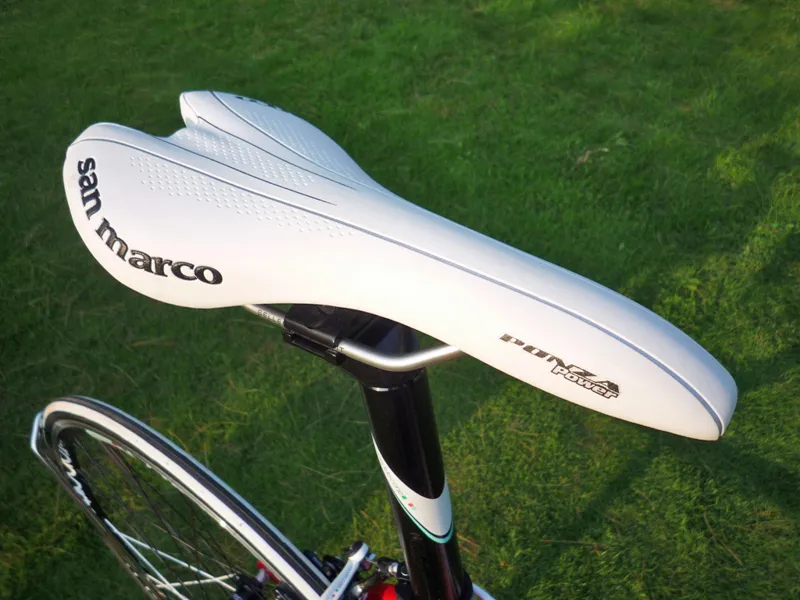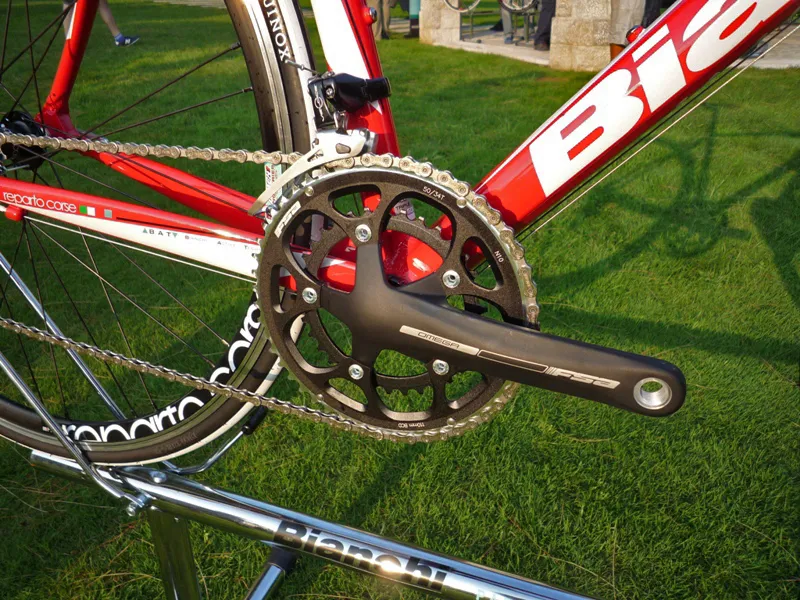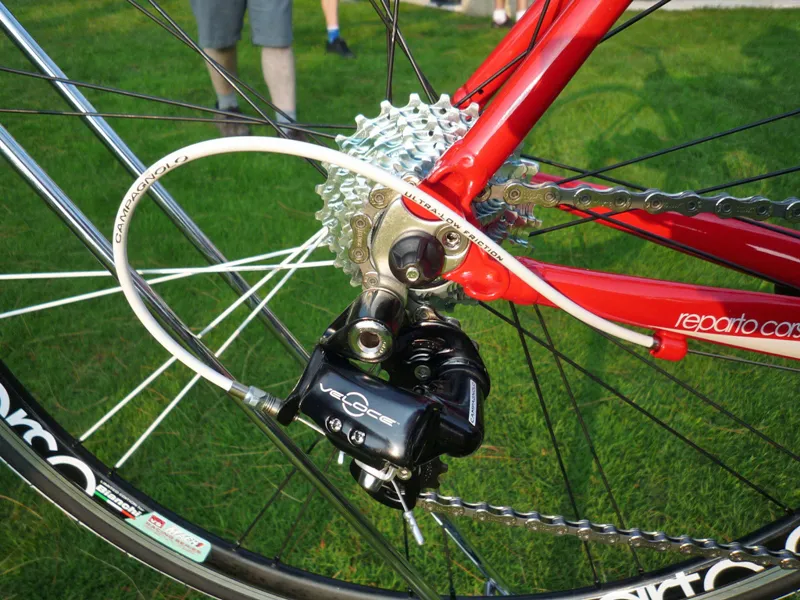The Impulso is Bianchi’s sole new road bike for 2012. We were among only a handful of journalists from around the world to ride the bike at the company's new range presentation near Bergamo in Italy earlier this week. It's a good-looking machine, and offers a reassuringly stable ride. But it feels heavy, both in the hand and on the road, and, with prices likely to start at around £1,300, it's up against some really tough opposition.
Ride & handling: Stiff and stable, but wheel and kit weight dulls responses
Despite its target market – essentially, sportive riders on a slightly restricted budget – the head tube on our 55cm Impulso wasn’t especially long in relation to the frame size and we found we could set it up with the fairly big 120mm drop from the saddle to the bars that we prefer on racy machines.
Anyone wanting a more upright position will need to ensure their bike is built up with room for plenty of spacers under the stem – something Bianchi eliminated on the more high-end Infinito by building up the head tube above its junction with the top tube. Certainly, the Impulso is nothing like as casual as, for instance, Specialized’s Secteur.
The Impulso isn’t a light bike, even in the context of its pricepoint. The frame is claimed to weigh a reasonable 1,500g but our complete test bike felt fairly hefty; we weren't able to weigh it, but we'd estimate it was somewhere in the region of 9-9.5kg (20-21lb). The wheels seem to be one of the main culprits, as acceleration and climbing are both dulled, despite the frame feeling decently stiff. On the plus side, there’s no significant flex, even when sprinting.
Aluminium has a bad reputation for harshness but this is based on clichés and frame designs from years ago. The roads we were on in Italy gave us a really good idea of how it deals with broken tarmac, misaligned drain covers, potholes and all the other hazards sent to tire you. The Impulso has a reasonably comfortable ride and definitely filters out some of the pain before it reaches your backside.
Our test bike was kitted out with Campagnolo Veloce, which feels as refined as you’d expect from a new bike. The shifting is smooth, with a soft edge where rivals, including its Campagnolo big brothers, deliver with more of a snap. That’s fine for newer riders or those on a really long ride but more aggressive riders might want faster responses – after all, a competitive mindset doesn’t necessarily come with a fat wallet.
Braking from the Reparto Corse calipers is more than good enough in brand new fettle, though the lack of excess power suggests you’ll have to keep them well tuned when they inevitably go off. Racers might find the absence of instant bite annoying but the soft and progressive response suits the relaxed, long-distance riding for which the C2C range is intended.
The same is true of the Impulso’s steering. It willingly and sensibly sacrifices some reactivity in favour of great stability. We tried to provoke it by nudging the bars at 40mph and it simply straightened itself out. That’s just what you need on a fast descent towards the end of an exhausting sportive.
Frame & equipment: Emphasis on aesthetics over performance
At Bianchi, family comes first, and they have three to consider: HoC, B4P and C2C, their trio of road bike 'families', as they like to call them. HoC stands for Hors Categorie, their top-end race bikes; B4P means Born For Performance, represented by the Sempre ‘amateur race’ bike; and C2C is for Coast To Coast, meaning more comfortable bikes for long distances.
The C2C family is made up of the entry-level aluminium Via Nirone7 and the mid- to high-level nano-carbon Infinito. Bianchi have created the Impulso to fill the space between them and address the important £1,000-2,000 sportive and leisure market. Its frame is made from what Bianchi call A4 aluminium along with 6061 series alloy in triple-butted tubes.
They’re open and unashamed about the fact that the styling of the new frame was the highest priority during development, with performance a close second. That led them to pioneer ‘Triple Hydroforming Technology’ to create the bike’s distinctive head tube arrangement, which looks more like that of a carbon fibre bike than an alloy one.
The head tube and top tube are each hydroformed individually, then welded together and hydroformed again to completely smooth out the welding. As well as looking good, this is claimed to save a small amount of weight and increase stiffness in that area by 10 percent.
The Impulso comes in nine sizes (44, 46, 50, 53, 55, 57, 59, 61, 63cm), and three build options are available: Shimano Ultegra with Reparto Corse RX5.1 by Maddux wheels; Shimano 105 with lower spec Reparto Corse wheels; and Campagnolo Veloce with Mach 1 wheels. All three bikes come with compact FSA Omega MegaExo cranksets and Reparto Corse (Bianchi’s in-house brand) finishing kit.
Prices aren't yet fixed for the Impulso. However, we’re told that the frame costs around €150 more than the Via Nirone7. Taking that bike as a guide, we can expect the Impulso to start at around £1,300 with 105 and £1,400 with Veloce. That puts it up against some really tough opposition that will make the spec and weight of the Impulso hard to reconcile. If you really want one, then we suggest going for the basic 105 version because for the prices of the other two models you have many better and lighter frames to choose from.
Riding the Oltre and Sempre
Bianchi’s marketing people were at pains to point out that the company are still focused on carbon fibre and not aluminium. To that end, the majority of the bikes available to ride at the 2012 launch were Oltres and Sempres, the two new bikes launched at this event last year. We took each for a spin around the valley for an hour and were really impressed.
Granted, each was top-spec ,with Shimano's Dura-Ace Di2 electronic groupset and carbon tubular wheels, but even judged by the highest standards, they're fantastic. The Sempre adds extra comfort and stability to the mix but is still superlight and climbs beautifully. The Oltre is a true racer, with lightning responses and a super-stiff chassis that loves aggressive descending and sprinting.
